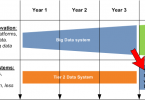Information Technology Service Management (ITSM) has become a key component for virtually every organization in the modern business world. The digital age is in full swing and the result of this reality is a world full of possibility and complexity in equal measures.
The complex nature of ITSM makes it difficult to understand how your IT department is performing and what changes could improve that performance. ITSM assessments seek to address these questions.
What is an ITSM Assessment?
An ITSM assessment is an analysis of your ITSM processes and systems capabilities. They compare your organization’s ITSM current performance against the industry standard Information Technology Infrastructure Library (ITIL) framework.
ITSM assessments seek to answer three primary questions: What is the current state of your ITSM performance? What is the desired state of your ITSM capabilities? And, lastly, how can you make the journey from your current state to your desired state?
Why is an ITSM Assessment Necessary?
System complexity is a result of layers of design that each build upon the layers of the past. These layers of complexity are easily observed when looking at technology as a whole. Software is built upon programming languages that interface with lower layers of software like operating systems which all eventually boil down to the most basic computer language of 1’s and 0’s (binary).
It’s incredible what we’re able to accomplish today thanks to decades of standing upon the shoulders of our predecessors. However, the byproduct of all these layers of complexity is, well, complexity—the kind of complexity that makes systems incredibly hard to operate within and even harder to optimize.
ITSM assessments can provide invaluable outputs for improving your organization’s performance across the board. The outputs created by a thorough ITSM assessment will generally be ITSM performance summaries referenced against ITIL standards, service management improvement recommendations, and process maturity assessments based on the process maturity model.
What is the Process Maturity Model?
Also called the Capability Maturity Model (CMM), the process maturity model is a measurement of how advanced your processes are in their life cycles by assigning them a level from 1 to 5. The five levels of process maturity are:
Level 1: Initial
The organization acknowledges there is an issue that needs to be addressed, but a process has yet to be detailed. Incidents are dealt with after they occur on a case-by-case basis without many guidelines–if any at all–for how to go about the process.
Level 2: Repeatable
A process has been designed in a way that different individuals have a general guide to follow by undertaking similar procedures. The success of these processes is often dictated by the individual’s knowledge and skill level.
Level 3: Defined
There is a standardized and documented process that is communicated through some form of training. Resources are pre-allocated to accomplish these tasks, which tend to be executed with a fair degree of success.
Level 4: Managed
Processes are both well-defined and in a constant state of management and improvement. Metrics are tracked to observe the impact of process changes on overall performance. Tools and automation are used to monitor compliance and improve the consistency of performance.
Level 5: Optimized
The final level of the CMM is optimization. Tasks are coordinated and managed with strong automation tools that provide deep insight and governance. Quality data is generated and exported to external management and business processes.
Using this model, ITSM assessments can score your organization’s ITSM processes to determine where your strengths and weaknesses lie.
How is an ITSM Assessment Performed?
Assessing the performance of your organization’s ITSM processes is accomplished through multiple stages and methods of observation, data collection, and documentation. As mentioned above, ITSM assessments seek to address three primary questions:
What is the current state of your ITSM performance?
Most ITSM assessments involve collecting internal reports generated by your ITSM processes as well as performing surveys of managers, stakeholders, and relevant staff. The more data gathered during an ITSM assessment, the more accurately that the first question can be answered.
Assessment surveys provide insight into capabilities, capacity, and process knowledge at different levels of your organization. Meanwhile, reports and tickets generated by your current ITSM tools provide detailed, quantified insight into the processes. Comparing surveys with ticket analysis can make it easier to identify opportunities for improvement.
What is the ideal state for ITSM processes?
Interviews with staff, stakeholders, and management along with surveys can help to nail down a detailed picture of what the future desired state is. This aspect of an ITSM assessment is key for creating practical and actionable goals for your ITSM processes. Referencing ITIL and ISO/IEC 20000 standards and guidelines is a great way to determine and validate goals.
How do you navigate from the current state to the ideal state?
Utilizing the wealth of information gleaned from answering the first two questions, a detailed roadmap with action items can be created. Comprehensive reports should be generated that compare current and future states against each other. Short, medium and long-term goals provide immediate guidance and big picture overviews to enhance adoption efforts and ultimate results.
ITSM Assessments Summarized
ITSM assessments can be thought of as wellness checkups for your ITSM processes. They analyze your organization’s current performance by collecting report data from your current ITSM tools and comparing that data with stakeholder information gathered in interviews and from surveys.
Further information is then gathered to identify organizational priorities and expectations to ensure that future efforts are put towards the areas that will have the greatest overall impact and return on investment.
Finally, a roadmap is generated that creates a navigable path from the current state of operations to the desired endpoint. Recommendations for improving overall ITSM performance as well as specific processes are created as the final outputs of an ITSM assessment. This information is presented in actionable reports that can be used to inform immediate actions as well as long-term strategies.
These postings are my own and do not necessarily represent BMC's position, strategies, or opinion.
See an error or have a suggestion? Please let us know by emailing blogs@bmc.com.






